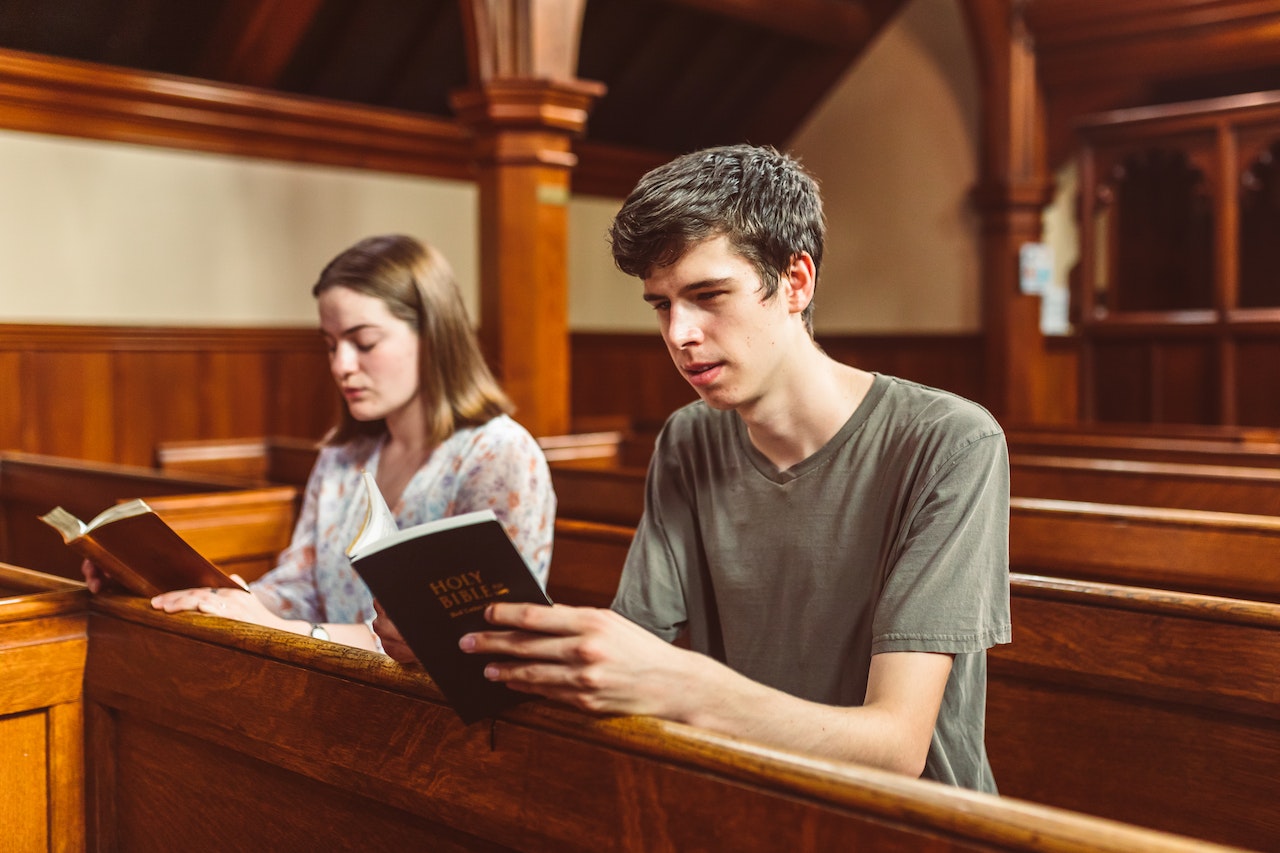Orthodox Judaism and Ultra-Orthodox Judaism are two distinct branches within the broader Jewish religious tradition. While both adhere to traditional Jewish beliefs and practices, they differ in their level of strictness and interpretation of Jewish law. Orthodox Judaism generally refers to those who follow traditional Jewish customs and laws, while Ultra-Orthodox Judaism, also known as Haredi Judaism, represents a more stringent and conservative approach to religious observance. These two branches have distinct cultural, social, and religious characteristics that set them apart within the Jewish community.
Table of Contents
History and Origins of Orthodox and Ultra Orthodox Judaism
Orthodox Vs Ultra Orthodox: History and Origins of Orthodox and Ultra Orthodox Judaism
Hey there! Have you ever wondered about the differences between Orthodox and Ultra Orthodox Judaism? Well, you’re in luck because today we’re going to dive into the fascinating history and origins of these two branches of Judaism. So, grab a cup of tea and let’s get started!
To understand the distinctions between Orthodox and Ultra Orthodox Judaism, we need to go back in time. Both of these branches trace their roots back to the same source: traditional Judaism. Traditional Judaism, also known as Rabbinic Judaism, emerged after the destruction of the Second Temple in Jerusalem in 70 CE. It was during this period that the Jewish people shifted their focus from temple worship to the study of Torah and the observance of Jewish law.
As time went on, different interpretations of Jewish law and customs began to emerge. This led to the development of various Jewish movements, including Orthodox Judaism. Orthodox Judaism emphasizes the strict adherence to Jewish law, known as Halakha, and the preservation of Jewish traditions. It places a strong emphasis on the authority of the Talmud and the teachings of the rabbis throughout history.
Now, let’s fast forward to the 18th century when a new movement within Orthodox Judaism began to take shape. This movement, known as Haredi Judaism or Ultra Orthodox Judaism, sought to intensify the level of religious observance even further. The term “Haredi” means “fearful” or “anxious” in Hebrew, reflecting the movement’s deep reverence for God and its commitment to living a pious life.
Ultra Orthodox Judaism places an even greater emphasis on separation from secular society and the strict observance of Jewish law. Its followers often live in tightly-knit communities, known as shtetls, where they can maintain their religious practices without outside influences. They typically dress in traditional clothing, such as black suits and hats for men, and modest attire for women, as a way to demonstrate their commitment to their faith.
It’s important to note that while both Orthodox and Ultra Orthodox Judaism share a commitment to Jewish law and traditions, there are some key differences between the two. One major distinction lies in the level of stringency in religious observance. Ultra Orthodox Jews tend to follow a more rigorous interpretation of Jewish law, often going beyond what is required by Orthodox Judaism.
Another difference lies in the approach to modernity. Orthodox Jews generally embrace modernity to some extent, while Ultra Orthodox Jews tend to be more skeptical and cautious about engaging with secular society. This can be seen in their attitudes towards technology, education, and gender roles, where Ultra Orthodox Jews often maintain more traditional practices.
In conclusion, Orthodox and Ultra Orthodox Judaism both stem from the same roots of traditional Judaism. While Orthodox Judaism emphasizes the strict adherence to Jewish law and the preservation of Jewish traditions, Ultra Orthodox Judaism takes it a step further by intensifying religious observance and promoting separation from secular society. Understanding the history and origins of these two branches helps shed light on the differences that exist within the Jewish community. So, next time you come across someone who identifies as Orthodox or Ultra Orthodox, you’ll have a better understanding of where they’re coming from.
Key Beliefs and Practices in Orthodox and Ultra Orthodox Communities

Orthodox Vs Ultra Orthodox
When it comes to religious communities, there are often different sects or groups that have their own unique beliefs and practices. In Judaism, two such groups are the Orthodox and Ultra Orthodox communities. While they may seem similar on the surface, there are some key differences in their key beliefs and practices.
One of the main differences between Orthodox and Ultra Orthodox communities lies in their approach to religious interpretation. Orthodox Jews generally follow a more moderate approach, interpreting religious texts in a way that is relevant to the modern world. They believe in the importance of studying the Torah and following its commandments, but also recognize the need to adapt to changing times.
On the other hand, Ultra Orthodox Jews take a more strict and literal approach to religious interpretation. They believe that the Torah is the literal word of God and should be followed exactly as it is written. This means adhering to a strict set of rules and regulations, often including strict dress codes and separation of men and women in public spaces.
Another key difference between Orthodox and Ultra Orthodox communities is their level of involvement in the secular world. Orthodox Jews generally have a more integrated approach, participating in the wider society while still maintaining their religious practices. They may work in various professions, attend secular schools, and engage in social activities outside of their religious community.
In contrast, Ultra Orthodox Jews tend to have a more insular lifestyle, focusing primarily on their religious community and limiting their interactions with the secular world. They often live in close-knit communities, where they have their own schools, businesses, and social services. This separation from the secular world is seen as a way to preserve their religious identity and protect themselves from outside influences.
One area where both Orthodox and Ultra Orthodox communities share common ground is their commitment to family and community. Family is considered to be of utmost importance in both groups, and they place a strong emphasis on traditional gender roles and the importance of marriage and child-rearing. Both communities also have a strong sense of communal responsibility, with members often supporting each other in times of need and coming together for religious celebrations and events.
In terms of religious practices, both Orthodox and Ultra Orthodox communities observe the Sabbath, which begins at sundown on Friday and ends at sundown on Saturday. During this time, they refrain from work and engage in prayer, study, and spending time with family. They also observe the dietary laws of kashrut, which dictate what foods are considered kosher and how they should be prepared and consumed.
While there are certainly differences between Orthodox and Ultra Orthodox communities, it is important to remember that both groups share a deep commitment to their faith and a desire to live according to their religious beliefs. Whether one chooses to follow a more moderate or strict interpretation of Judaism, the ultimate goal is the same: to live a life that is pleasing to God and in accordance with the teachings of the Torah.
Differences in Lifestyle and Cultural Traditions between Orthodox and Ultra Orthodox Jews
Orthodox Vs Ultra Orthodox: Differences in Lifestyle and Cultural Traditions between Orthodox and Ultra Orthodox Jews
When it comes to Judaism, there are various sects and denominations that follow different interpretations and practices. Two of the most well-known groups within Judaism are the Orthodox and Ultra Orthodox communities. While they share many similarities, there are also distinct differences in their lifestyle and cultural traditions.
Let’s start by understanding what it means to be Orthodox. Orthodox Jews adhere strictly to Jewish law, known as Halakha, and believe in the divine origin of the Torah. They prioritize the observance of religious rituals and traditions, such as keeping kosher, observing the Sabbath, and praying three times a day. Orthodox Jews also place great importance on education, with many attending yeshivas (religious schools) to study Jewish texts.
On the other hand, Ultra Orthodox Jews, also known as Haredi Jews, take religious observance to an even higher level. They follow an ultra-strict interpretation of Jewish law and live in tightly-knit communities that are often isolated from the secular world. Ultra Orthodox Jews prioritize religious study above all else, with men spending most of their time in yeshivas and women focusing on maintaining a traditional household.
One of the key differences between Orthodox and Ultra Orthodox Jews lies in their dress code. Orthodox Jews typically dress modestly, with men wearing a kippah (skullcap) and women covering their hair, often with a wig or scarf. However, Ultra Orthodox Jews take modesty to another level. Men wear long black coats, black hats, and have long beards, while women dress in modest clothing that covers their arms, legs, and hair. This distinctive attire serves as a visual representation of their commitment to religious observance.
Another significant difference between the two groups is their approach to technology and the outside world. Orthodox Jews generally embrace modern technology and engage with the secular world to some extent. They may use smartphones, computers, and other modern conveniences while still adhering to religious guidelines. In contrast, Ultra Orthodox Jews tend to be more wary of technology and limit their exposure to the outside world. They may avoid using smartphones or the internet and prioritize face-to-face interactions within their community.
Family life is also an area where Orthodox and Ultra Orthodox Jews differ. Orthodox Jews typically have large families and place great importance on marriage and procreation. They encourage early marriage and view having children as a religious duty. Ultra Orthodox Jews take this even further, with large families being the norm. They often have arranged marriages and prioritize raising children in a strictly religious environment.
Despite these differences, both Orthodox and Ultra Orthodox Jews share a deep commitment to their faith and a strong sense of community. They value the preservation of Jewish traditions and the passing down of religious knowledge from generation to generation. Both groups also face challenges in balancing their religious beliefs with the demands of the modern world.
In conclusion, while Orthodox and Ultra Orthodox Jews share many similarities, there are distinct differences in their lifestyle and cultural traditions. From their dress code to their approach to technology and family life, these two groups have unique ways of expressing their commitment to Judaism. Understanding these differences helps foster a greater appreciation for the diversity within the Jewish community and the richness of its traditions.
Challenges and Controversies within Orthodox and Ultra Orthodox Jewish Communities
Orthodox Vs Ultra Orthodox
When it comes to the Jewish faith, there are various sects and denominations that exist, each with its own unique practices and beliefs. Two of the most well-known and influential groups within Judaism are the Orthodox and Ultra Orthodox communities. While they may seem similar at first glance, there are distinct differences between the two that have led to challenges and controversies within these communities.
Orthodox Judaism is often seen as the more moderate of the two groups. Orthodox Jews adhere to traditional Jewish law, known as Halakha, and place a strong emphasis on the study of Torah. They believe in the divine origin of the Torah and follow its commandments closely. Orthodox Jews also tend to be more integrated into modern society, participating in various professions and engaging with the secular world.
On the other hand, Ultra Orthodox Judaism takes a more stringent approach to religious observance. Ultra Orthodox Jews, also known as Haredim, prioritize religious study and prayer above all else. They often live in tightly-knit communities and maintain a strict separation from secular society. Ultra Orthodox Jews typically dress in traditional attire, with men wearing black suits and hats, and women covering their hair with wigs or scarves.
One of the main challenges within these communities is the tension between tradition and modernity. Orthodox Jews, while still adhering to traditional practices, are more open to engaging with the secular world. They may pursue higher education, work in various professions, and interact with non-Jews. However, this integration can sometimes lead to conflicts between religious obligations and societal expectations.
Ultra Orthodox Jews, on the other hand, prioritize religious study and often discourage secular education or involvement in non-religious professions. This strict separation from the secular world can create challenges when it comes to finding employment or navigating modern society. It can also lead to tensions with the broader Jewish community, as some Orthodox Jews view the Ultra Orthodox as being too insular and disconnected from the larger Jewish society.
Another controversy within these communities revolves around gender roles and women’s rights. Orthodox Judaism generally adheres to traditional gender roles, with men taking on leadership roles in religious and communal life. Women are often expected to focus on their families and domestic responsibilities. While there is a growing movement within Orthodox Judaism to expand women’s roles in religious leadership, the progress has been slow and met with resistance from more conservative elements.
In the Ultra Orthodox community, gender segregation is taken to an extreme. Men and women are often separated in public spaces, with separate seating areas in synagogues and separate entrances on buses. Women’s rights are limited, and they are often excluded from positions of religious leadership. This has led to criticism from both within and outside the Ultra Orthodox community, with many advocating for greater gender equality and inclusivity.
Despite these challenges and controversies, both the Orthodox and Ultra Orthodox communities play a vital role in preserving Jewish traditions and values. They provide a strong sense of community and support for their members, and their commitment to religious observance is commendable. While there may be differences in approach and beliefs, it is important to recognize and respect the diversity within the Jewish faith.
In conclusion, Orthodox and Ultra Orthodox Judaism are two distinct groups within the Jewish faith. While Orthodox Jews tend to be more integrated into modern society, Ultra Orthodox Jews prioritize religious study and maintain a strict separation from the secular world. Challenges and controversies arise from tensions between tradition and modernity, as well as gender roles and women’s rights. However, both communities contribute to the rich tapestry of Jewish life and deserve understanding and respect.
Conclusion
In conclusion, Orthodox Judaism and Ultra-Orthodox Judaism are two distinct branches within the Jewish faith. While both adhere to traditional Jewish practices and beliefs, Ultra-Orthodox Judaism places a greater emphasis on strict observance of religious laws and separation from secular society. This includes distinctive dress, strict gender roles, and a focus on religious study. Orthodox Judaism, on the other hand, allows for more flexibility in religious observance and engagement with the modern world. The differences between these two branches reflect varying interpretations of Jewish law and traditions, as well as differing approaches to balancing religious observance with contemporary life.
For licensing reasons, we must provide the following notice: This content was created in part with the help of an AI.


